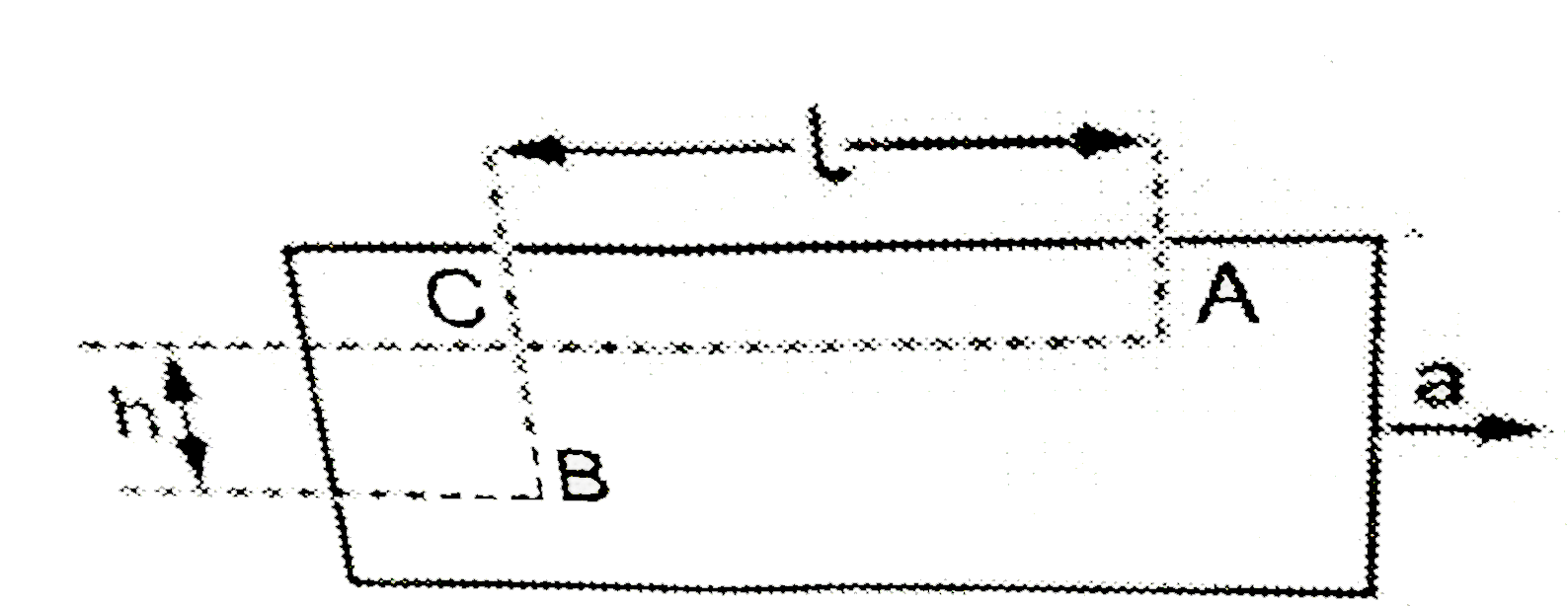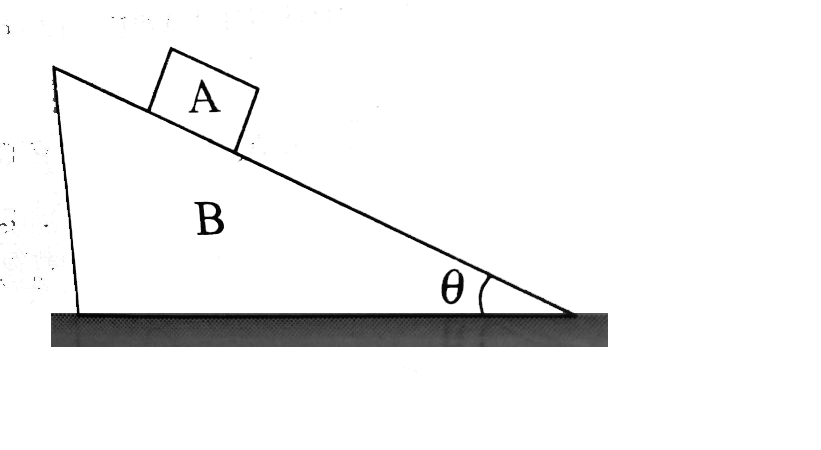A lorry carries a tank of water. If the lorry moves with a uniform acceleration 'a' in the horizontal direction, determine the angle made by the surface of water in the tank with the horizontal.
To solve the problem of determining the angle made by the surface of water in a tank with the horizontal when the lorry is moving with a uniform acceleration 'a', we can follow these steps:
Step 1: Understand the Forces Acting on the Water
When the lorry accelerates horizontally, the water in the tank experiences two forces:
1. The gravitational force acting downwards (weight of the water), which is mg (where m is the mass of the water and g is the acceleration due to gravity).
2. An inertial force acting horizontally in the opposite direction of the acceleration of the lorry, which is ma (where a is the acceleration of the lorry).
Step 2: Set Up the Right Triangle
The forces can be represented as a right triangle:
- The vertical side (perpendicular) is the gravitational force mg.
- The horizontal side (base) is the inertial force ma.
- The angle θ is the angle made by the surface of the water with the horizontal.
Step 3: Use Trigonometric Relationships
From the right triangle formed by these forces, we can use the tangent function:
tan(θ)=OppositeAdjacent=mgma
Step 4: Simplify the Equation
The mass m cancels out from the equation:
tan(θ)=ga
Step 5: Solve for the Angle θ
To find the angle θ, we take the inverse tangent (arctan) of both sides:
θ=tan−1(ga)
Final Answer
Thus, the angle made by the surface of water in the tank with the horizontal is:
θ=tan−1(ga)
---
When the lorry accelerates horizontally, the water in the tank experiences two forces:
1. The gravitational force acting downwards (weight of the water), which is mg (where m is the mass of the water and g is the acceleration due to gravity).
2. An inertial force acting horizontally in the opposite direction of the acceleration of the lorry, which is ma (where a is the acceleration of the lorry).
The forces can be represented as a right triangle:
- The vertical side (perpendicular) is the gravitational force mg.
- The horizontal side (base) is the inertial force ma.
- The angle θ is the angle made by the surface of the water with the horizontal.
From the right triangle formed by these forces, we can use the tangent function:
tan(θ)=OppositeAdjacent=mgma
The mass m cancels out from the equation:
tan(θ)=ga
To find the angle θ, we take the inverse tangent (arctan) of both sides:
θ=tan−1(ga)
Thus, the angle made by the surface of water in the tank with the horizontal is:
θ=tan−1(ga)
Similar Questions
A vessel contains a liquid has a constant acceleration 19.6m/s2 in horizontal direction. The free surface of water get sloped with horizontal at angle
View SolutionA block of mass 'm' is placed on the floor of a lift, moving upward with an uniform acceleration a = g. (μis the coefficient of friction between block and the floor of lift). If a horizontal force of umg acts on the block, then horizontal acceleration of the body is .......
View SolutionSuppose that water is emptied from a spherical tank of radius 10 cm. If the depth of the water in the tank is 4 cm and is decreasing at the rate of 2 cm/sec, then the radius of the top surface of water is decreasing at the rate of
View SolutionA closed cubical box is completely filled with water and is accelerated horizontally towards right with an acceleration a. The resultant normal force by the water on the top of the box.
View SolutionAn open rectangular tank 1.5 m wide 2m deep ad 2 m long is half filled with water. It is accelerated horizontally at 3.27m/s2 in the direction of its length determine the depth of water at each end of tank.
View Solution
A sealed tank containing a liquid of density ρ moves with a horizontal acceleration a, as shown in the figure. The difference in pressure between the points A and B isView SolutionA water tanker filled up to 23 of its height is moving with a uniform speed. On sudden application of the brake, the water in the tank would
View SolutionA container containing a liquid is moving down an incline plane with constant acceleration 'a' . The angle made by the water surface in equilibrium with the inclined plane is
 View Solution
View SolutionWater is filled in a rectangular tank of size 3m×2m×1m. a) Find the total force exerted by the water on the bottom surface of the tank. b) Consider a vertical side of area 2m×1m. Take a horizontal strip of wide δx metre in this side, situated at a depth of x metre from the surface of water.Find the force by the water on this strip. c) Find the torque of the force calculate in part b) about the bottom edge of this side. d) Find the total force by the water on this side. e) Find the total torque by the water on the side about the bottom edge. neglect the atmospheric pressure and take =10ms−2.
View Solution
A block is placed on a smooth wedge of inclination angle θ with the horizontal. What minimum acceleration should be given to the wedge in the horizontal direction so that the block starts moving up along the incline?View Solution

